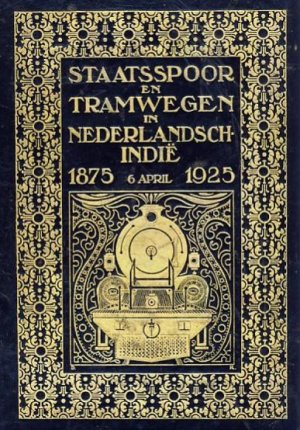aryadwi_ef641030
Wait for 5 minutes
It seems that some of users here in this forum began to be fascinated with things related to railways in Indonesia, so I decided to start a new thread where everyone here can discuss anything related to the railways in Indonesia. Of course not only about the trains itself, but also the history behind the railway networks in Indonesia, infrastructures, photography spots for those who wants to capture Indonesian trains into a photo, and even disused railway lines scattered around Indonesia. 
Here I start with the discussion about grade crossing equipments in Indonesia:

Today Indonesian Railways employed different types of grade grossing equipments, from imported products to locally-made equipments. While the standard type employed by Indonesian Railways is the ones manufactured by Nederlandse Machinefabriek Alkmaar (NMA) as early as 1970s or 1980s using the same design with those in Netherlands, Indonesian Railways are also employing products from different companies like Nippon Signal and Kyosan Seisakusho (Japan), even Safetran Systems (US) had exported some examples of their product to Indonesia (though in limited quantity). On the other side, equipments manufactured by local companies already gained popularity in Indonesia, even with additional features that are not available within products imported from overseas companies. And even the strangest one is the recycling of boom gates for parking area as boom gate for grade crossing by local authorities, which are common on grade crossings previously not equipped with boom gates and warning lights. But there is one similarity between all of them: outside the original version of grade crossing equipments manufactured by Japanese company, all of them employs the warning siren similar to the standard siren of police car, ambulance and firetruck commonly found in Europe (especially Netherlands).
======================================
Here is the footages of Indonesia's grade crossings that I found on YouTube, categorized according the company who manufactured it (note that I attached only the link to the video, due to limitation for video tag):
1. Nederlandse Machinefabriek Alkmaar (NMA) - Netherlands
https://www.youtube.com/watch?v=5ZaCS7Tror8
Footage by Aldio Yudha Trisandy
https://www.youtube.com/watch?v=EruDL3yZMXE
Footage by Basman Hardajaya
https://www.youtube.com/watch?v=UlqN42SaFKM
Footage by Basman Hardajaya
https://www.youtube.com/watch?v=z2iD7QcdsNQ
Footage by JPLtvChannel
https://www.youtube.com/watch?v=6hJ3FejxKNA
Footage by Syahrir Maulana Ghiffary
2. Nippon Signal + Kyosan Seisakusho - Japan
https://www.youtube.com/watch?v=_qsm5vKNFHI
Footage by Basman Hardajaya
https://www.youtube.com/watch?v=2Eo29XXQ30E
Footage by JPLtvChannel
3. Safetran Systems - US
https://www.youtube.com/watch?v=9I67EO9YzBI
Footage by Aldio Yudha Trisandy. Note that this crossing employs warning lights and siren made by PT LEN Industri
https://www.youtube.com/watch?v=iqtqmIkQ_1g
Footage by Basman Hardajaya
4. PT LEN Industri - Indonesia
https://www.youtube.com/watch?v=HklnlDkIAqc
Footage by Basman Hardajaya
https://www.youtube.com/watch?v=LN85QlK1nkk
Footage by JPLtvChannel
5. CV Wahyu Jaya - Indonesia
https://www.youtube.com/watch?v=How2PNV-Oso
Footage by Aldio Yudha Trisandy
6. Nataya Putra - Indonesia
https://www.youtube.com/watch?v=j6SFlYLdAkc
Footage by Basman Hardajaya
https://www.youtube.com/watch?v=CrGZpTnChrA
Footage by Aldio Yudha Trisandy
7. Kreasi Anak Bangsa - Indonesia
https://www.youtube.com/watch?v=08wIbhuVEOA
Footage by Basman Hardajaya
8. Multec - Indonesia
https://www.youtube.com/watch?v=2OllZoyo8gE
Footage by Aldio Yudha Trisandy
All videos are credited to the respective original owner(s).
======================================
Cheers,
Arya.
Here I start with the discussion about grade crossing equipments in Indonesia:

Today Indonesian Railways employed different types of grade grossing equipments, from imported products to locally-made equipments. While the standard type employed by Indonesian Railways is the ones manufactured by Nederlandse Machinefabriek Alkmaar (NMA) as early as 1970s or 1980s using the same design with those in Netherlands, Indonesian Railways are also employing products from different companies like Nippon Signal and Kyosan Seisakusho (Japan), even Safetran Systems (US) had exported some examples of their product to Indonesia (though in limited quantity). On the other side, equipments manufactured by local companies already gained popularity in Indonesia, even with additional features that are not available within products imported from overseas companies. And even the strangest one is the recycling of boom gates for parking area as boom gate for grade crossing by local authorities, which are common on grade crossings previously not equipped with boom gates and warning lights. But there is one similarity between all of them: outside the original version of grade crossing equipments manufactured by Japanese company, all of them employs the warning siren similar to the standard siren of police car, ambulance and firetruck commonly found in Europe (especially Netherlands).
======================================
Here is the footages of Indonesia's grade crossings that I found on YouTube, categorized according the company who manufactured it (note that I attached only the link to the video, due to limitation for video tag):
1. Nederlandse Machinefabriek Alkmaar (NMA) - Netherlands
https://www.youtube.com/watch?v=5ZaCS7Tror8
Footage by Aldio Yudha Trisandy
https://www.youtube.com/watch?v=EruDL3yZMXE
Footage by Basman Hardajaya
https://www.youtube.com/watch?v=UlqN42SaFKM
Footage by Basman Hardajaya
https://www.youtube.com/watch?v=z2iD7QcdsNQ
Footage by JPLtvChannel
https://www.youtube.com/watch?v=6hJ3FejxKNA
Footage by Syahrir Maulana Ghiffary
2. Nippon Signal + Kyosan Seisakusho - Japan
https://www.youtube.com/watch?v=_qsm5vKNFHI
Footage by Basman Hardajaya
https://www.youtube.com/watch?v=2Eo29XXQ30E
Footage by JPLtvChannel
3. Safetran Systems - US
https://www.youtube.com/watch?v=9I67EO9YzBI
Footage by Aldio Yudha Trisandy. Note that this crossing employs warning lights and siren made by PT LEN Industri
https://www.youtube.com/watch?v=iqtqmIkQ_1g
Footage by Basman Hardajaya
4. PT LEN Industri - Indonesia
https://www.youtube.com/watch?v=HklnlDkIAqc
Footage by Basman Hardajaya
https://www.youtube.com/watch?v=LN85QlK1nkk
Footage by JPLtvChannel
5. CV Wahyu Jaya - Indonesia
https://www.youtube.com/watch?v=How2PNV-Oso
Footage by Aldio Yudha Trisandy
6. Nataya Putra - Indonesia
https://www.youtube.com/watch?v=j6SFlYLdAkc
Footage by Basman Hardajaya
https://www.youtube.com/watch?v=CrGZpTnChrA
Footage by Aldio Yudha Trisandy
7. Kreasi Anak Bangsa - Indonesia
https://www.youtube.com/watch?v=08wIbhuVEOA
Footage by Basman Hardajaya
8. Multec - Indonesia
https://www.youtube.com/watch?v=2OllZoyo8gE
Footage by Aldio Yudha Trisandy
All videos are credited to the respective original owner(s).
======================================
Cheers,
Arya.






